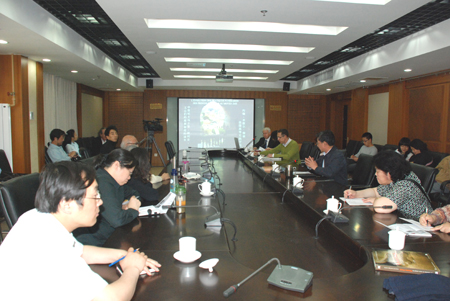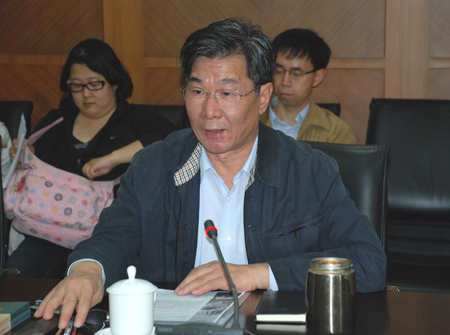Summary of the Sino-French Lecture Series: The Evolution of Funeral Custom of Medieval Damascus (Syria) Monarchs
On afternoon 20th May, the 141st lecture of the Sino-French Lecture Series titled “The Evolution of Funeral Custom of Medieval Damascus (Syria) Monarchs” was held jointly by Ecole Française d'Extrême-Orient and the Institute of Archaeology, CASS. Given by Mr. Jean-Michel Mouton of Ecole Pratique des Hautes Études, this lecture is one of the 2010-2011 series “Harmony with Differences: Contributions of Archaeology and Art History to Make the Other World”. The vice director of the Institute of Archaeology Bai Yunxiang presided the lecture and gave a speech of welcome. Prof. Alain Thote of Ecole Pratique des Hautes Études introduced the background of the speaker. Prof. Marianne Bujard of Beijing Center of Ecole Française d'Extrême-Orient, scholars from Institute for the History of Natural Sciences, CAS and the Institute of Archaeology, CASS attended the lecture.

The speaker displays and discusses the development of funeral customs of medieval Damascus monarchs from simple burials following the Islamic principle to huge mausoleum constructions. The process reflects their concepts of the afterworld and endeavors to get there.
The Muslims’ tombs contain no burial object, which is different from tombs of Damascus monarchs. Tombs of some monarchs like Saladin yield a casket containing noble clothes and a sword nearby the deceased, usually indicative of a soldier dedicating to the holy war. Some monarchs dress green due to the prophet Mohammed like green. Damascus monarchs tried to make themselves Islamic heroes by creating tombs in various ways, which, however, were serious damaged due to politics and military conflicts.

Most Medieval Muslim tombs of Damascus were located outside the city wall. But monarch tombs from the Seljuk dynasty starting from 1076 were built far away from ordinary people. During the late 12th century, monarch tombs were built inside the city wall and became the most important noble cemetery in Damascus. The 11th century Turkish noble tombs were mostly built by their successors or wives, leading to the emergence of “double burial”.
Tombs of Damascus monarchs have changed enormously during the period of Turkish reign. Tombs with a huge dome were prevailing, but the interior was very simple. Pit tombs with a single body or more are common, with their heads toward the holy city of Mecca. Most tombs are family burials. In tombs from the Ayyubid dynasty stone or wooden square steles were placed at the two ends of the tomb instead of original stones. The wooden square steles are more frequent and more delicately made. First appeared in 1120, this feature was one of the greatest innovations of Turkish monarch tombs.
Most tombs of Damascus monarchs from the 12th century have a dome and a square body with windows and a small shrine facing to the direction of Mecca city. Saladin’s mausoleum is quite unique. It is the only one which has a cone-shaped facade and a vault with honeycombed inner structure.
In general, the above features of tombs of Damascus monarchs reflect obviously the strong desire of nobles to demonstrate their identities and honor their political memories. Through this way they believe they could also avoid suffering from the afterworld, get close to the saints and ascend to the heaven.
After the lecture, scholars from different fields engaged in a thorough discussion on features of Islamic tombs in China and related finds, the cultural exchanges between China and the West and questions of comparative study on tomb features. (Translator: Tong Tao)

